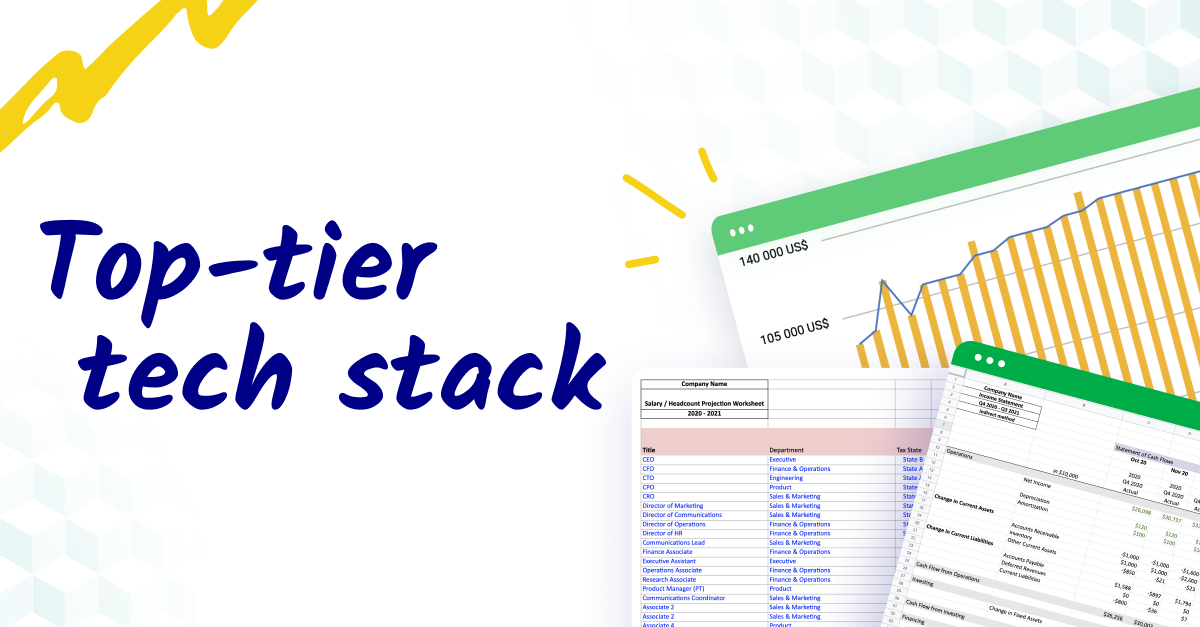Understanding flexible budgeting
Flexible budgeting stands as a dynamic financial strategy, essential for businesses that understand the unpredictability of the market. Unlike its static counterpart, a flexible budget doesn't remain rigid throughout the fiscal year. Instead, it adapts, reflecting the ongoing performance and needs of a business.
Flexible budgeting isn’t about setting funds and forgetting them. It revolves around adjusting expenses based on actual costs and revenues, moving away from the constraints of fixed forecasts. Whether it's a percentage of overall revenue or scenario planning, this approach enables real-time financial decisions that align with current business realities.
Imagine a business forecasting $2.5 million in revenue. A traditional budget might earmark a solid $250,000 for annual marketing. Regardless of the actual outcome, these numbers remain unaltered, potentially leading to underutilized resources or overspending.
Enter flexible budgeting. This strategy might allocate, say, 10% of actual revenue for marketing. Initially, it mirrors the static budget at $250,000. But here's the game-changer: if revenues soar to $5 million, the marketing budget automatically bulks up to $500,000. This responsiveness allows companies to capitalize on favorable trends or scale back during downturns.
However, the flexibility doesn't end there. Beyond mere numbers, it's about strategic shifts — analyzing ROI, reassigning funds to high-performing channels, or even repositioning sales teams based on evolving market trends.
In essence, flexible budgeting isn’t merely a technique; it's a mindset. It empowers businesses, particularly SMBs, to navigate the ebb and flow of operational dynamics, investing in success and promptly redirecting during downturns.

Why flexible budgeting is crucial for SMBs
One might say that flexible budgeting is most critical for small to medium-sized businesses (SMBs). Here's why: Small enterprises, especially those with a micro setup involving less than 10 people, often operate within a relatively stable financial environment. Whether it's a local bakery or a boutique design studio, their revenues don't typically see drastic short-term shifts. Plus, with lower overheads and hands-on owners, they enjoy a certain level of agility.
Conversely, large corporations have a buffer against market storms, thanks to diverse revenue streams and substantial cash reserves. They can afford to ride out inconsistencies without resorting to immediate budget adjustments.
Now, consider SMBs. These companies are frequently in an aggressive growth phase, meaning any significant swing in revenues, either way, can shake the foundations. They're big enough to include departments that aren't directly tied to revenue generation—think HR, tech development, or legal teams. Moreover, their investment in marketing and customer acquisition usually exceeds that of their smaller counterparts, not to mention the cash reserves of larger enterprises.
This middle ground is where flexible budgeting comes into play. CFOs and finance leaders in SMBs can't afford to be caught off guard. Revenue forecasts and cash flows demand their constant attention, and they must stand ready to pivot at a moment's notice.
In today's market, a flexible budget isn't just an advantage; it's a requirement. For SMBs aiming to navigate unpredictable business cycles, adapting their financial strategies on the go is essential.
Benefits of flexible budgeting for SMBs
Sure, "flexibility" is a buzzword. But what does it translate into for your business practically? Here's the real impact:
Enhanced accuracy
As the saying goes, a broken clock is still right twice a day—and a static budget is right at least once a quarter. But if that one time is at the start of the reporting period, it’s little help to those in charge of making financial decisions worth millions of dollars.
Every budget has both fixed and variable costs. Expenses like rent will likely be the same, whether you’re using a flexible or a static budget. But for variable costs, like the cost of goods sold or sales team commission, there could be much greater variability.
A flexible budget adjusts, and therefore, is more accurate. It changes and adapts to the performance of the company, meaning that the numbers it’s based on are as usable in Q3 as they are in Q1.
Agile decision-making
Imagine sticking with a failing strategy just because you've allocated the budget for the entire quarter. That's not a smart move, especially for fast-paced SMBs.
Every day counts, and you can't afford to wait for the next budget review while resources drain. Flexible budgeting encourages a nimble mindset, allowing teams to respond to real-time data and shift gears if something's not working.
Efficient resource allocation
Fixed budgets set the stage for wasted resources. You might be funneling money into non-performing areas simply because it's "in the budget."
On the flip side, flexible budgets enable quick resource realignment. They cushion the blow from lower-than-expected revenues and allow you to capitalize on successful initiatives instantly. This way, you're not just saving money; you're making every dollar work harder.
Improved financial forecasting
Everyone’s got someone the answer to. And in business, that person wants to know what your results are going to be. For a company with a static budget, projecting what the finances are going to look like for the rest of the quarter can be a challenge, let alone the rest of the year.
A flexible budget still can’t tell the future, but it can give you greater accuracy in your current financials, which means more accuracy in your projections. That keeps your boss—and their boss—happy.
Implementing flexible budgeting in SMBs
Now that you understand the benefits of implementing flexible budgeting as an SMB, let’s go through exactly how you can implement one for your business.
Start with a strong static budget
It might sound counterintuitive after championing flexibility, but a well-thought-out static budget isn't obsolete.
Consider it your financial launchpad. It gives you a sensible starting line, and the closer this is to reality, the less scrambling you'll do later. So, invest time in this part, forecasting wisely to set a realistic stage.
Embrace technology
With static data, time can be taken to ensure there are no errors and that the data matches up. A flexible budget, on the other hand, needs to change on the fly, which can introduce a huge margin for errors if done manually.
That’s why modern FP&A software is a necessity for implementing a flexible budget. The right tech allows for much of the flex in a flexible budget to happen automatically.
For example, software allows you to create multiple scenarios based on various revenue figures. As the numbers come in, you can instantly change the forecast to match reality and have ready-to-go budgets for every department in your organization.
Foster a culture of agility
The mechanics of this process are important. The flexible budgeting strategy you put in place will be the foundation of your financial management, but what’s really going to give your company an edge is the culture it creates.
We hear all the time about how agile, new entrants to an industry can disrupt it by moving quicker than the slow-moving legacy providers. That agility can be built into a company of just about any size, and definitely into an SMB.
Encourage your team to think beyond their quarterly targets. Inspire them with examples of how flexible budgeting could play out and invite them to take ownership. When they're actively seeking smarter, more resourceful ways to meet goals, that's when you know your business isn't just surviving changes; it's leading them.
Potential pitfalls and how to avoid them
Though flexible budgeting is a powerful tool, it's not without its challenges. It’s crucial to recognize these potential pitfalls and understand how to avoid them effectively..
Over-complication
Being adaptable doesn't mean constant change. Businesses face natural fluctuations, and adjusting the budget for every minor shift can lead to confusion and instability within your team.
Establish clear criteria for budget adjustments. Understand that occasional dips or rises are part of business trends and don’t necessitate immediate budgetary changes. Allow your strategies to unfold to see their effectiveness over a reasonable period.
Lack of discipline in review
Implementing a flexible budget requires dedication to regular reviews. Neglecting this critical step can render your budget ineffective, leading to outdated strategies and missed opportunities for adjustment.
Commit to a consistent review schedule. Whether it's weekly or monthly, ensure it's manageable with your workload. This consistency is key to leveraging the full benefits of flexible budgeting.
Over-reliance on technology
Technology enhances financial planning by providing real-time data and automated adjustments. However, it doesn’t replace the need for human oversight. Blind reliance on software can lead to overlooked insights and lack of strategic control.
Use technology as an aid, not a substitute for human analysis. It’s the strategic thinking and decision-making of your finance team that makes the real difference. Encourage them to engage deeply with the data and trends, rather than just monitoring automated insights.
Conclusion: budget for a flexible future
Flexible budgeting is key for SMBs, helping them adapt quickly to financial changes. It requires the right mix of tech and regular check-ins, but the payoff is worth it: smarter spending and stronger strategy in the face of uncertainty.
Want to learn how you can achieve this with Cube? Request a free demo today.



.png)









.png)

.png)



%20(1).png)
